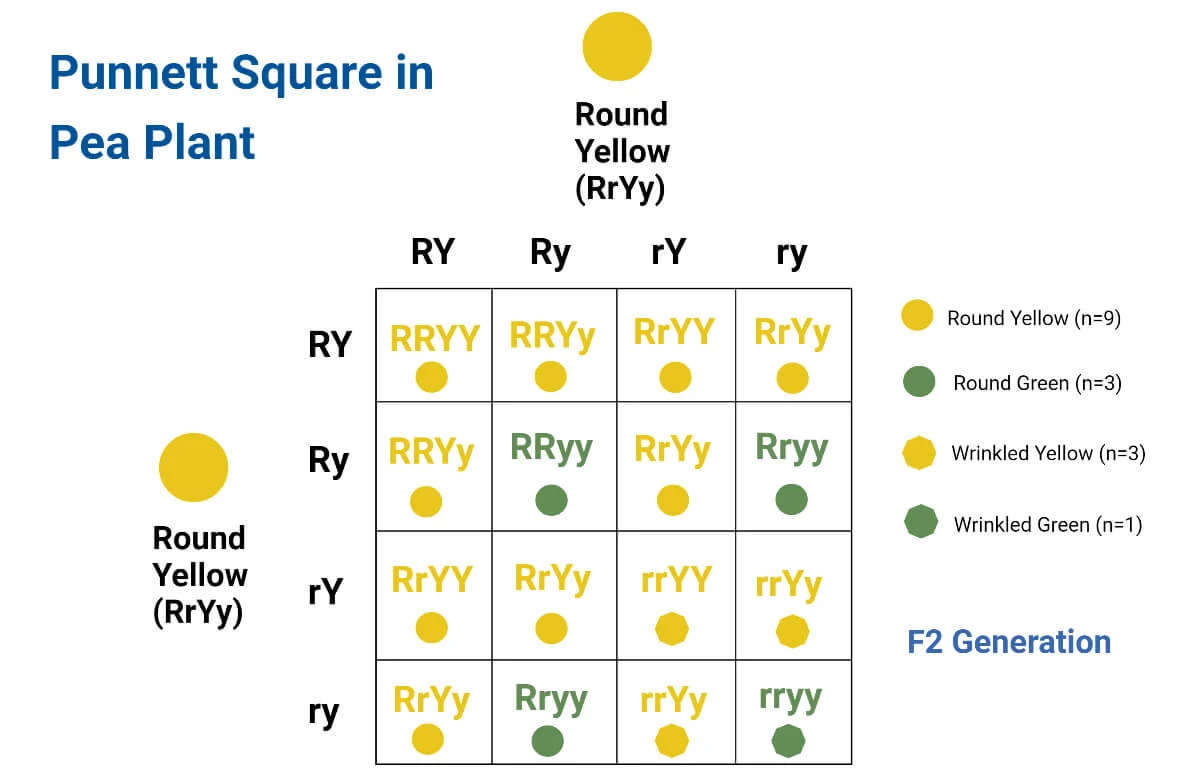Lecture 12 - Mendelian Genetics
1/33
There's no tags or description
Looks like no tags are added yet.
Name | Mastery | Learn | Test | Matching | Spaced |
|---|
No study sessions yet.
34 Terms
Genes
Discrete heritable units passed on from parent
Alleles
the different “versions” of genes that are inherited, reflecting different physical traits and characteristics
Dominant Allele
If the two alleles at a gene locus differe, the ____ determines the organism’s appearance
Recessive Allele
If the two alleles at a gene locus differ, the ____ has no noticeable effect on organism’s appearance
Homozygous
Organism has two identical alleles for a character
Heterozygous
Organism with two different alleles for a character
Phenotype
Observable traits - refers to physiological traits and appearance traits.
Genotype
Organism’s genetic makeup
PP vs Pp both expressed as purple flowers, but have different genotype
Two organisms can have the same phenotype by different genotypes if one is homozygous dominant and the other is heterozygous.
Testcross
Unknown individual is bred with a homozygous recessive individual, if any offspring display recessive phenotype, they unknown must be heterozygous.
Law of Segregation
3:1 rations observed in F2 generation
Two alleles for a heritable character separate during gamete production into different gametes
the breaking apart of alleles relates to the physical separation of homologous chromosomes to different daughter cells in meiosis I.
If organism has two identical alleles, then that allele is present as a single copy in ALL gametes
if organism has different alleles, then 50% will receive one and 50% receive the other.

Punnett square
Used to predict the probability of results of a genetic cross between individuals with known genotypes. Mendel’s 3:1 ration for F2 generation.
Law of independent assortment
conclusion that the two pairs of alleles segregate independently of each other. Each pair of alleles for different genes segregate independently during gamete formation.
Dihybrid
Individual that are heterozygous for two characters (YyRr) Follows two different traits
When sperm with four classes of alleles and ova with four classes of alleles combine, there are 16 equally probable ways in which the alleles can combine in the F2 generation.
These combinations produce four distinct phenotypes in a 9:3:3:1 ratio
Monohybrid
Describes an individual that is heterozygous for one character.
Degrees of Dominance
When alleles are not completely dominant or recessive
Multiple Alleles
When a gene has more than two types of alleles
Pleiotropy
When a single gene produces multiple phenotypes
Epistasis and polygenic traits
When two or more genes control a single trait
Incomplete Dominance
Heterozygotes show a distinct intermediate phenotype not seen in homozygotes
EX: 25% white flowers, 25% red flowers, 50%pink flowers
Codominance
Two alleles affect the phenotype in separate distinguishable ways
EX: Both traits are exhibited such as M, N, and MN — MN is not an intermediate but exhibits both M and N phenotype
Prevalence of dominant vs recessive traits
a dominant allele is not necessarily more common in a population than the recessive allele
Many genes exist in populations in more than two allelic forms.
Example: blood type has three different alleles
Epistasis
the phenotypic expression of a gene at one locus alters the phenotypic expression of a gene at a second locus.
Polygenic Inheritance
Additive effects of two or more genes on a single phenotypic character.
Quantitative characteristics
Traits that vary in population along a continuum EX: Heigh or skin color
Genes and environment determine phenotype
What influences phenotype
Pedigree
Mapping of specific traits on a family tree, info about the presence or absence of a particular phenotype trait is collected from as many individuals in a family as possible, across generation — helps understand past and predict the future
Some human disorders are recessively inherited
Genetic disorders are inherited as simple homozygous recessive traits, heterozygotes have a normal phenotype because one normal allele produces enough of the required protein/enzyme
Albinism
Present only in homozgyous recessive individuals, inherit one recessive allele from each parent.
Carriers
Soemone who may transmit a recessive allele to their offspring
Some human disorders are dominantly inhereited EX: achondroplasia (dwarfism)
99.99% of population who are notdwards are homozygous recessive
Lethal dominant vs recessive alleles
A lethal dominant allele can escape elimination if it causes death at a relatively advanced age, after the individual has already passed on the lethal allele to his or her children
Lethal dominant alleles are much less common than lethal recessive alleles.
If a lethal dominant allele kills an offspring before he or she can mature and reproduce, the allele will not be passed on to future generations.
Some disorders are mutifactorial
Disorders have a genetic component plus significant environmental influence… EX: diabetes, heart disease, certain mental illnesses… etc.
Genetic component of such disorders is typically polygenic.